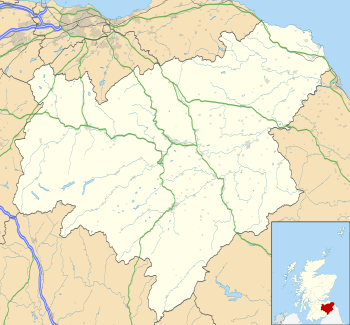St Andrew's College, Drygrange
| St Andrew's College, Drygrange | |
|---|---|
 | |
 St Andrew's College, Drygrange Location of the college within Scottish Borders | |
| 55°36′39″N 2°40′19″W / 55.610935°N 2.671984°WCoordinates: 55°36′39″N 2°40′19″W / 55.610935°N 2.671984°W | |
| Location | Melrose, Scotland |
| Country | United Kingdom |
| Denomination | Roman Catholic |
| History | |
| Former name(s) | Drygrange House |
| Founded | 1953 (as seminary) |
| Founder(s) | Archbishop Gordon Gray (later Cardinal) |
| Dedication | Saint Andrew |
| Architecture | |
| Heritage designation | Category B-listed building[1] |
| Designated | 4 June 1991 |
| Architect(s) | John Peddie and Charles Kinnear[1] |
| Closed | 1986 (as seminary) |
| Administration | |
| Deanery | St Cuthbert's Borders[2] |
| Archdiocese | St Andrews and Edinburgh |
St Andrew's College, Drygrange, located near Melrose, Scotland, was a Roman Catholic seminary founded in 1953 and closed in 1986.
History
Foundation
Founded by Gordon Gray shortly after he became Archbishop of St Andrews and Edinburgh, the college was operated by the archdiocese in a large country house called Drygrange House.[3] The house, standing north of the Leaderfoot Viaduct, included sizeable grounds bordered by the River Leader, a tributary of the River Tweed.
Closure
The archdiocese took the decision to close the college with effect from the autumn of 1986.[4] The closure was blamed by then-Archbishop Keith O'Brien, himself a former student of the seminary, on the halving of the number of new Scottish entrants to the priesthood.[5]
The remaining students were transferred to Gillis College, Edinburgh, the new seminary for the archdiocese,[6] and some 2,300 items from the college's library were deposited in the National Library of Scotland.[7]
On another analysis, the new Gillis College was the seminary of St Andrew's, transferred to a new site and renamed.[8]
In 1987, the archdiocese sold the college's former buildings at Drygrange for £250,000 and they became a nursing home called Grange Hall Care Home.[4]
In 1993, Gillis College also closed, and Chesters College, Bearsden, later renamed Scotus College, became the national seminary for Scotland.[6][8]
Notable alumni
- Paul K. Bakyenga, Archbishop of Mbarara[9]
- Dennis Canavan, Scottish politician[10]
- Bishop Vincent Logan
- Cardinal Keith O'Brien[11]
- Bishop Stephen Robson
Gallery
 The entrance to the former Drygrange House, in the Scottish Borders (2008).
The entrance to the former Drygrange House, in the Scottish Borders (2008).
See also
- List of listed buildings in Melrose, Scottish Borders
- List of Roman Catholic seminaries
- List of schools in Scotland
References
- 1 2 Database (undated). "Drygrange House (Drygrange Nursing Home, Formerly St Andrew's College), Including Garden Terrace Wall, Melrose". British Listed Buildings. Retrieved 6 March 2013.
- ↑ Staff (undated). "Deaneries". Roman Catholic Archdiocese of St Andrews and Edinburgh. Retrieved 6 March 2013.
- ↑ Database (undated). "Drygrange House". Royal Commission on the Ancient and Historical Monuments of Scotland. Retrieved 6 March 2013.
- 1 2 Staff (7 August 1987). "Seminary Moves On". Catholic Herald. Retrieved 6 March 2013.
- ↑ Staff (23 May 1986). "Fifty Per Cent Drop in Number of Priests Ordained in Scotland". Catholic Herald. Retrieved 6 March 2013.
- 1 2 Staff (undated). "The Gillis Centre's Past". Gillis Centre. Retrieved 6 March 2013.
- ↑ Staff (undated). "Scottish Catholic Library Collections and Catalogues". Scottish Catholic Archives. Retrieved 6 March 2013.
- 1 2 Wright, David F.; Badcock, Gary David (1996). Disruption to Diversity: Edinburgh Divinity 1846–1996. Edinburgh: T&T Clark. p. 253. ISBN 978-0-567-08517-7.
- ↑ Isingoma, David (ed.); Nuwagaba, Wycliff (ed.) (1994). Who's Who in Uganda. Kampala: Fountain Publishers. p. 11. OCLC 475400248.
- ↑ Canavan, Dennis (2009). Let the People Decide: The Autobiography of Dennis Canavan. Edinburgh: Birlinn. p. 32. ISBN 978-1-841-58839-1.
- ↑ (1986). "O'Brien, Cardinal". Who's Who in Scotland. (Ayrshire: Carrick Media). p. 373. ISBN 978-0-956-57484-8.